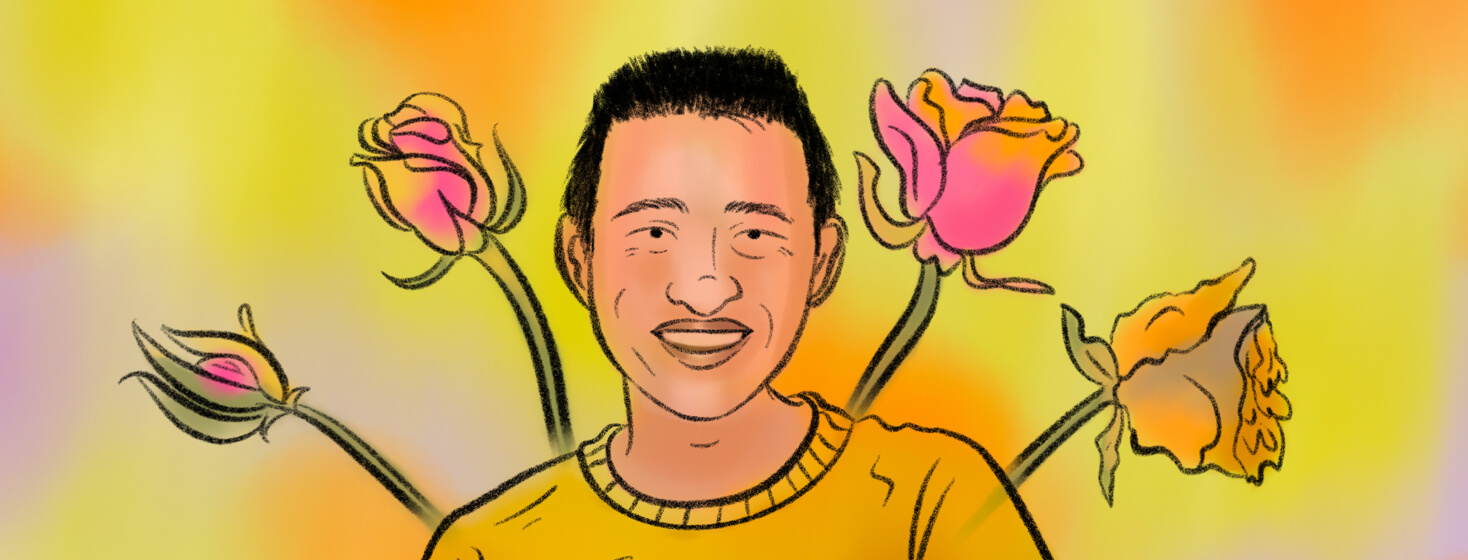Interview with Terrence Ho: End-of-Life Doula (Part I)
Terrence Ho is an end-of-life doula, working with families and loved ones of those nearing death to bring support and preparation to the end-of-life process.
In Part I of Cystic-Fibrosis.com's interview with Terrence, he explains what an end-of-life doula is, how he decided to become an end-of-life doula, and why being an end-of-life doula has changed his perspective on life and death.
What is an end-of-life doula?
Like a birth doula who supports the person giving birth and their family members, an end-of-life doula supports the person and helps their family plan to prepare for and be present at the end of the person's life.
This is the description directly from the End of Life Doula Association:
End-of-life doulas empower, educate and encourage people and their families to be involved in making decisions. The word "doula" is Greek for servant or helper. Like a birth doula supports women during the labor process, a death doula supports a person during the dying process. This support is specific to that person's needs, beliefs, and desires.
Death is a process that can span over months or even years rather than an event and doulas can help with supporting and planning for the future, regardless of diagnosis or illness. Having a conversation or making a plan when you are healthy, is encouraged by doulas so that the care received at the end of life is appropriate and aligned with your wishes.
Why did you decide to become an end-of-life doula?
As a family caregiver to my younger brother who lives with Duchenne Muscular Dystrophy and my mom who died recently of stage four lung cancer, I felt that the end-of-life doula training would give me more tools for my toolkit to support me and my family as they go through their end-of-life process.
When my mom was diagnosed with cancer, I was able to put my training into practice in supporting and planning with her. From discussing what was important to her during the dying process like the environment she wanted to be in, who she would like to be by her side, what music and lighting she wanted in the room.
In addition to that, we also planned who she wanted to spend time with, what meals she wanted to have and what final life experiences she wanted to explore. It was fulfilling to have coordinated and experienced all of those things with her before her death.
The intention with my personal experience and training is to enable me to support and guide others who are either supporting a loved one or someone who is at their own end of life.
Hospice can be scary for everyone, how do you make the patient and their surrounding family feel more comfortable? What considerations are there for pediatric patients?
Most hospice environments are designed to be comfortable and peaceful for the person dying and their families. The staff and volunteers at the hospice are trained in caring for and supporting those at their end-of-life.
The difference between palliative and hospice care is that palliative care focuses on comfort and pain management with the acknowledgment that the diagnosis is no longer treatable by conventional medicine. While hospice focuses on both comfort and pain management with the understanding that the person is at their end-of-life.
At least in Canada, doulas are not recognized and do not work in hospice settings.
To ensure the client and their family feel more comfortable in any environment, at home, hospice or hospital is to refer to the person’s wishes in the living will/advance healthcare directive (in the US) or advance care plan (in Canada) and ensure what the person dying wants is made available and executed to the best of our ability.
I personally have not yet worked with pediatric clients, however, I would apply similar methods of speaking openly about death, what their wishes are during the dying process and execute according to their wishes and their family’s wishes.
How has being an end-of-life doula changed your perspective on life and death?
Before becoming an end-of-life doula, I had an opportunity to visit Nepal. During that visit, my friend took me to a public crematory. We sat there watching the processions take place. Family and friends would take the person and bless the body in the river. What stood out to me was that the only thing the person who died carried with them are the relationships with people who loved and cared for that person.
While I supported my brother in his near-death experience and supported my mom’s end-of-life care, I realized that it really came down to the community of people who surrounded, lifted and loved our family, which gave us a sense of normalcy. In these moments it was proven to me that it truly takes a village to raise us from birth to death.
As one of my favourite quotes from Japanese writer, Haruki Murakami says, “Death is not the opposite of life but a part of it”.
Being trained as an end-of-life doula has reinforced that death is part of life. And although it may be uncomfortable to think or talk about, it is something we cannot avoid. It takes courage and vulnerability to speak about our own end-of-life wishes and to be curious about our loved one’s wishes.
Come back to Cystic-Fibrosis.com for Part II of our interview with Terrence! Have you or someone you know received support from an end-of-life doula?

Join the conversation